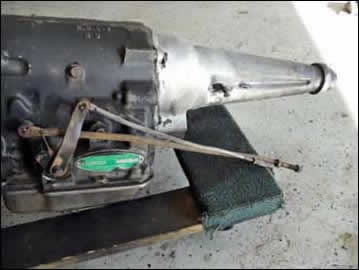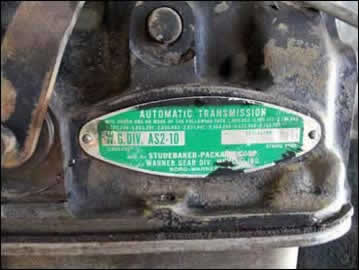Standard gearing for the unblown Avanti engine is a 3-speed manual transmission with ratios of 2.57:1 in 1st and 1.55 in 2nd and a rear axle of 3.31. Optional for the same powerplant but standard for the supercharged unit is the Warner 4-speed with 2.54:1 in 1st, 1.89 in 2nd, and 1.51 in 3rd, driving through an axle of 3.73. Perhaps the most interesting transmission of all is the automatic, described by
Studebaker as a special high-performance version of the Borg-Warner torque converter cum 3-speed gearbox. The converter has a maximum stall ratio of 2.1:1 at 2200 rpm, multiplying a 1st gear of 2.40 and 2nd of 1.47. Normal axle ratios are 3.31 with the standard engine and 3.73 with the blown version. The automatic's really unusual feature is its shifting control. It has three forward positions, marked "1," "2," and "D." "1" engages 1st gear only while "2" supplies 1st or 2nd, according to road speed. "D" provides only 2nd and 3rd under normal conditions or 1st, 2nd, and 3rd under full throttle. In practical terms, this means the driver can start out in "1" and hold 1st as long as he wants. A flick of the lever to "2" causes an upshift to 2nd and "D," of course, provides 3rd. Yet, on slippery surfaces, 2nd gear starts can be obtained by placing the lever in "D" and applying a light touch to the accelerator. In 1962 this was the greatest degree of manual control ever incorporated into an automatic transmission for a U.S. passenger car.

